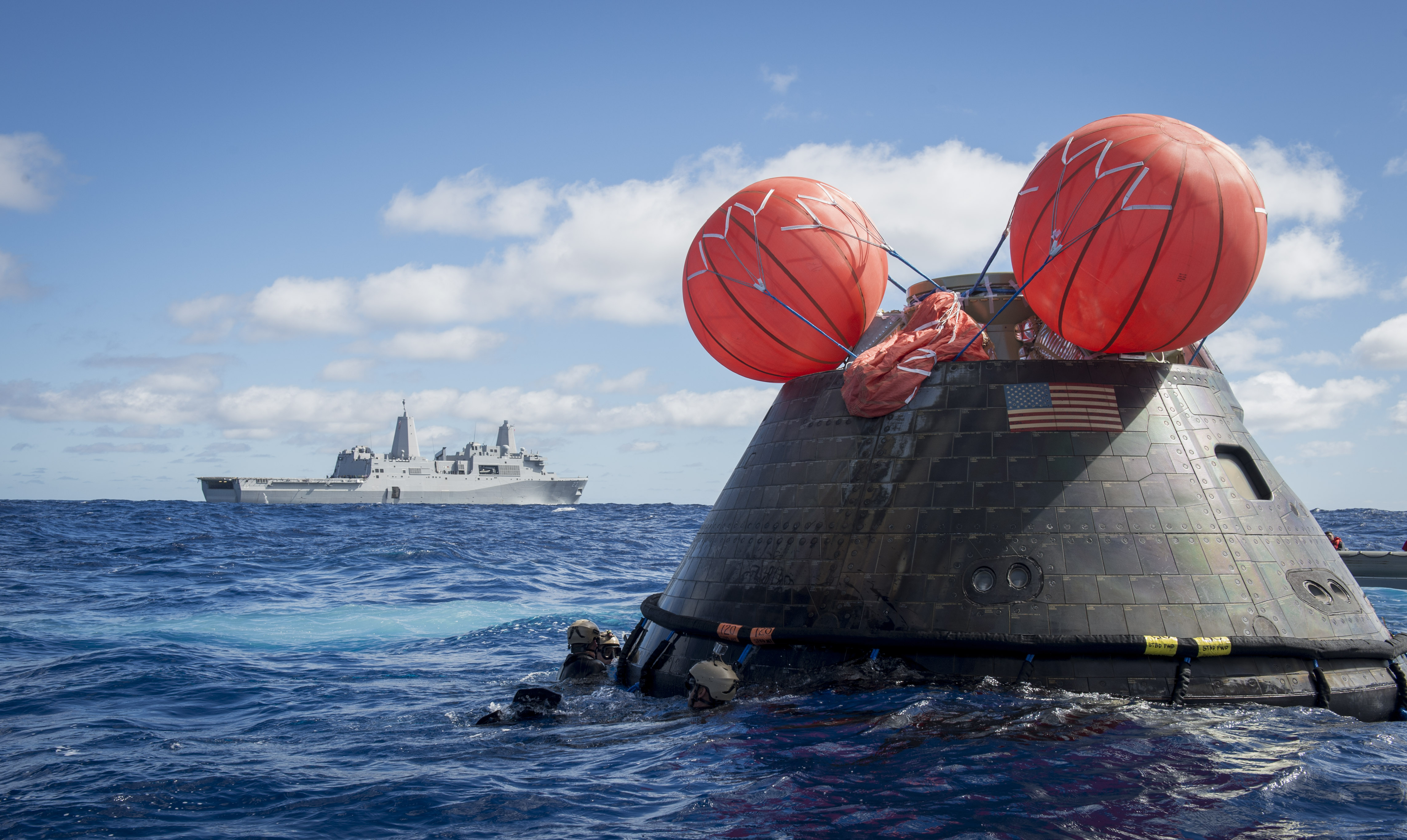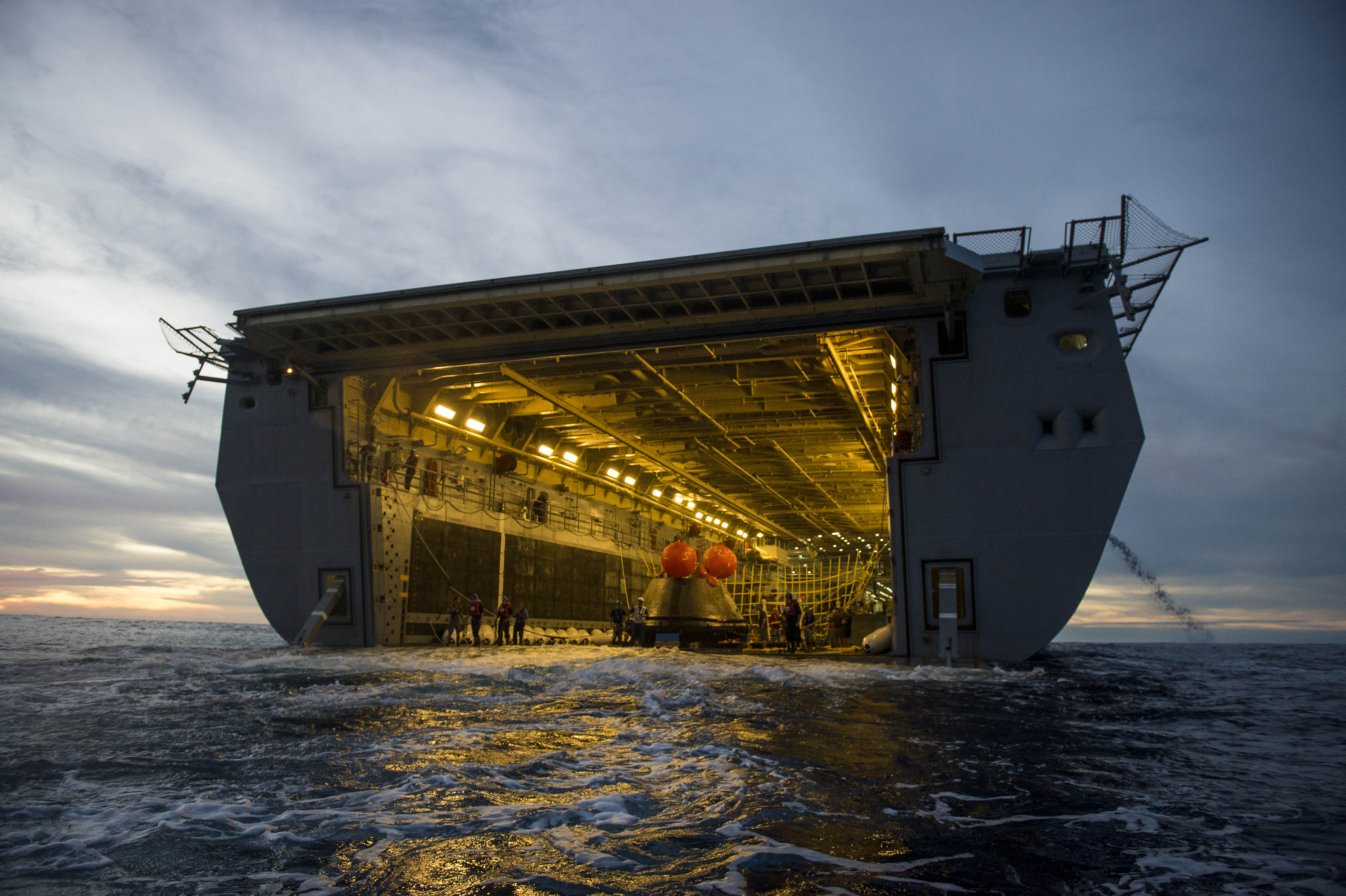
Friday’s successful test of NASA’s reusable Orion capsule was a first for the space agency and a renewal of a greater Navy role in the space program.
Riding a Delta IV heavy rocket from Cape Canaveral , Fla. the unmanned crew module flew out of the atmosphere for about 4 and a half hours before splashing down about 600 miles away from Naval Station San Diego, Calif in the NASA mission dubbed — Exploration Flight Test 1 (EFT-1).
Waiting was the crew of the amphibious warship USS Anchorage (LPD- 23) to pick up the 9.5-ton capsule, in a maneuver NASA and the Navy hope to become routine.
Following reentry into the Earth’s atmosphere, the capsule drifted down on three parachutes before splashing into the Pacific. Then Navy divers from Anchorage moved to the capsule from the ship’s welldeck on small rigid hull inflatable boats to attach lines to the capsule before it was winched into the ship.
“Orion is meant to be reused, which is why we tailored this recovery to accommodate keeping the capsule safe,” said Navy Diver 1st Class Matthew Demyers of Explosive Ordnance Disposal Mobile Unit 11 said in a Monday Navy statement.
In addition to the welldeck, San Antonio-class LPDs have a 3-D air search radar and extensive medical facilities designed to care for embarked Marines — all attributes NASA liked, officials told USNI News in 2013.

The new method of capsule recovery is much safer and predictable than the Apollo era where Navy and Marine helicopters plucked the capsule from the water and landed them on the decks of aircraft carriers or older amphibious ships with a much higher degree of visual drama.
The Navy has been training to recover Orion since 2013 and EFT-1 is the fifth time the LPDs have worked with NASA on recovery testing.
“Anchorage and NASA worked very closely during the second and third Underway Recovery Tests (URT) earlier this year in preparation for our mission today. This mission exemplifies the U.S. Navy commitment to the research and development of technologies and techniques to ensure the safety of human space flight support. I could not be more proud of my crew,” Capt. Michael McKenna said in a Monday statement.
The next out-of-atmosphere mission for the Orion is slated for 2018 with a manned flight possible sometime in 2021, according to NASA.





